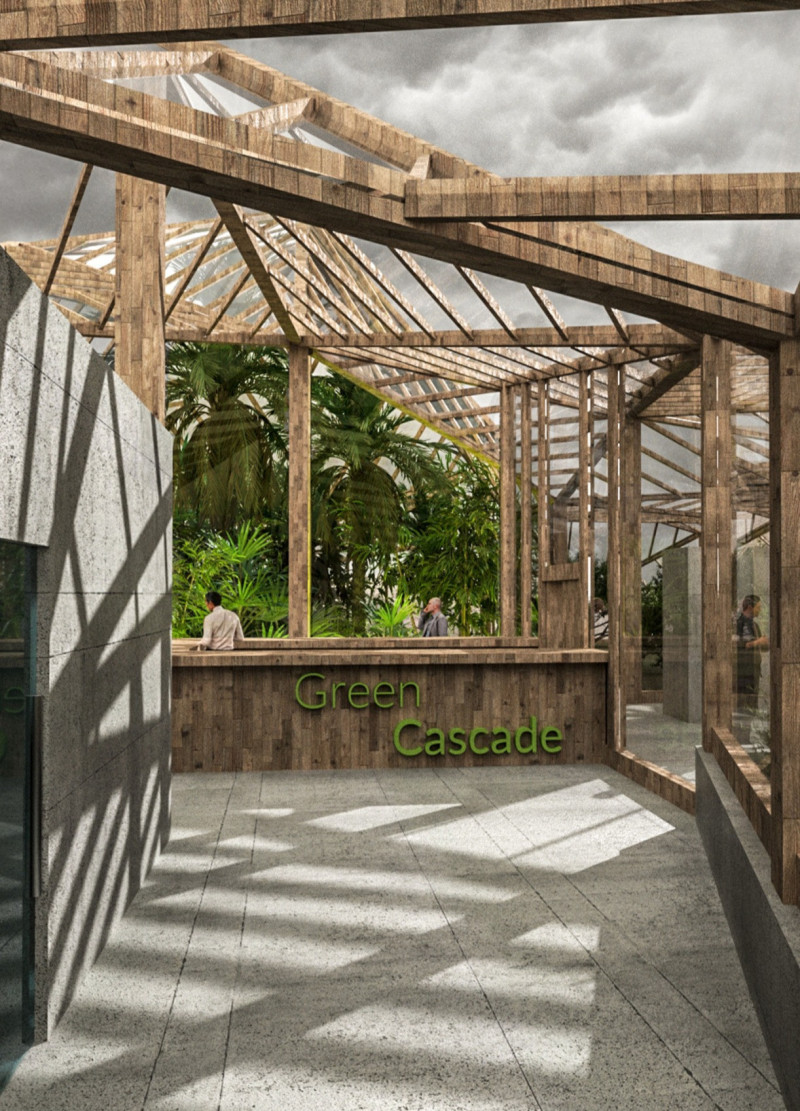5 key facts about this project
The Green Cascade project is located near Hverfjall volcano in Iceland. It combines a restaurant with a greenhouse, focusing on preserving the beautiful views of the surrounding landscape. The design concept emphasizes the relationship between the built environment and nature while promoting sustainability and enhancing the user experience.
Terraced Greenhouse Design
The layout of the project features multiple terraces that adapt to the site's slope. This design allows the greenery to flow downwards visually, connecting the building to the landscape. Each level creates opportunities for people to engage with nature. Different greenhouse sections encourage various kinds of plant growth, adding to the overall aesthetic appeal.
Climate Zone Integration
Inside the greenhouse, there are four specific climate zones, each designed for different types of plants. These include a temperate area, a tropical zone for bananas and dates, a nursery for young plants, and a section for Mediterranean climate plants. This division not only supports a diverse array of agriculture but also provides educational experiences for visitors about different ecosystems.
Sustainability Practices
Sustainability is a key focus of the project. It follows an off-the-grid model, aiming for complete self-sufficiency. A biogas plant processes organic waste into energy, while a compost heap converts biodegradable materials into fertilizer. Additionally, a water treatment system cleans gray sewage by using plant systems, ensuring that water is reused and contributing to the project's environmental goals.
Thermal Efficiency and Functionality
Thermal efficiency is carefully considered in the building's design. The arrangement of spaces minimizes heat loss, placing the warmest areas away from cold exposure. Public and private spaces are clearly defined. Public areas center around the greenhouses, while support zones like the kitchen and nursery are less visible. This layout improves the flow of operations and enhances the overall visitor experience.
Visitors can enjoy the dynamic interaction between the restaurant and the lush, vegetated terraces. The design encourages guests to appreciate the natural surroundings and engage with the lush greenery while enjoying their meals.





















































